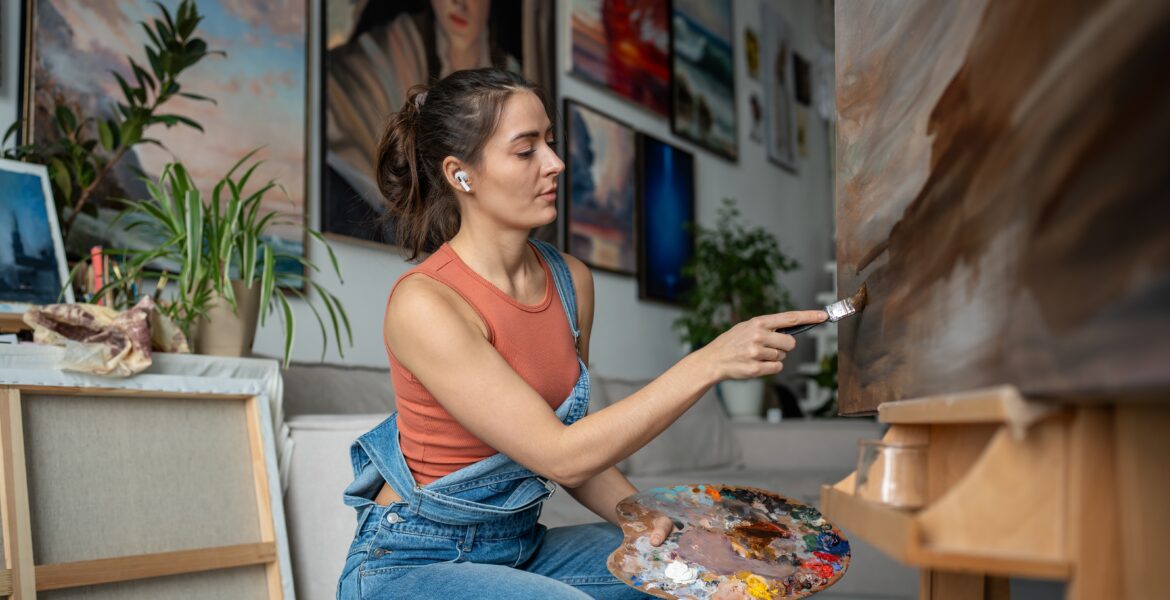If you spend a lot of your time doodling, painting, working with clay, making jewelry, or creating art in any way, shape, or form, and you find that your mind is a little more clear than it was when you started, that’s because there are a lot of positive things happening in your mind and body when you’re creating awesome art. Let’s talk about it.
Why Making Art Is Good for You
Sure, making art is just a fun time, but the effects making art has on you run deep. In a good way, of course! Let’s look at just a few of the major benefits there are to creating.
Deep Flow Only
Here’s a hypothetical situation for you: have you ever started a project then hit a good stopping point only to find out literal hours have passed and you had no idea? That’s because you were in the zone or experiencing what creatives know as “deep flow”. During this time you’ve lost track of time and yourself. You’ve allowed yourself to be present, activating a number of networkings in your brain including those associated with focused attention and pleasure.
Reward Center Activated
Talk to any artist and they’ll probably tell you that making art is nerve-wracking because they’re consistently worried if it’s going to turn out good, if people will like it, etc. But by simply engaging in visual expression, that reward part of your brain becomes activated which means you’ll feel good and have a good time. When you experience this, you want to do it more and before you know it, you’ll be seeking out time throughout your day to create while simultaneously taking the edge off.
Time to Process
Processing things and feelings can be hard depending on what you’re going through, but making art can help. Art allows you to express your feelings and/or memories in a way that words don’t. A lot of people have also found that making art can also provide a sense of relief thanks to the combination of a deep flow state and certain parts of your brain being activated.
Less Stress
Making art reduces our natural cortisol levels. Regardless of what art you make, how skilled you are, or if you consider yourself an artist at all, your brain will still experience all of these positive reactions to creating.
Where to Start
If you’re feeling inspired by the idea of making art, but aren’t so inspired about what art to make, here are a few suggestions no matter your skill level.
- Pottery: Clay is awesome because it engages touch, 3-D space, sight, and maybe even sound. There are a number of ways you can go about this, you can start with air dry clay to become more familiar with the process, you can check out a local studio for classes or opportunities to paint pieces that have already been thrown, or you can combine a couple of interests and start making jewelry or dishes out of clay at home.
- Coloring: If you’re like us, you probably have some coloring books sitting around your house that have gone untouched for a period of time. It’s time to buy those fancy felt tip markers that have been sitting in your Amazon card for a while and start adding life to the pages. If you consider yourself new to the world of art, coloring is a great starting point. This is also an easy project to tote around with you and take to the next room, your office, school, etc.
- Doodling: If you don’t know what to doodle, an art journal complete with prompts may help.
- Writing: Again, if you aren’t sure what to write about, a journal with prompts can take the guesswork out of it while you perfect your craft.
- Photography
- Dance
- Needlework crafts
- Jewelry
Note: If you are in serious mental distress, we urge you to seek help in the form of therapy or counseling. Art therapy can be an extremely beneficial part of your treatment plan.







